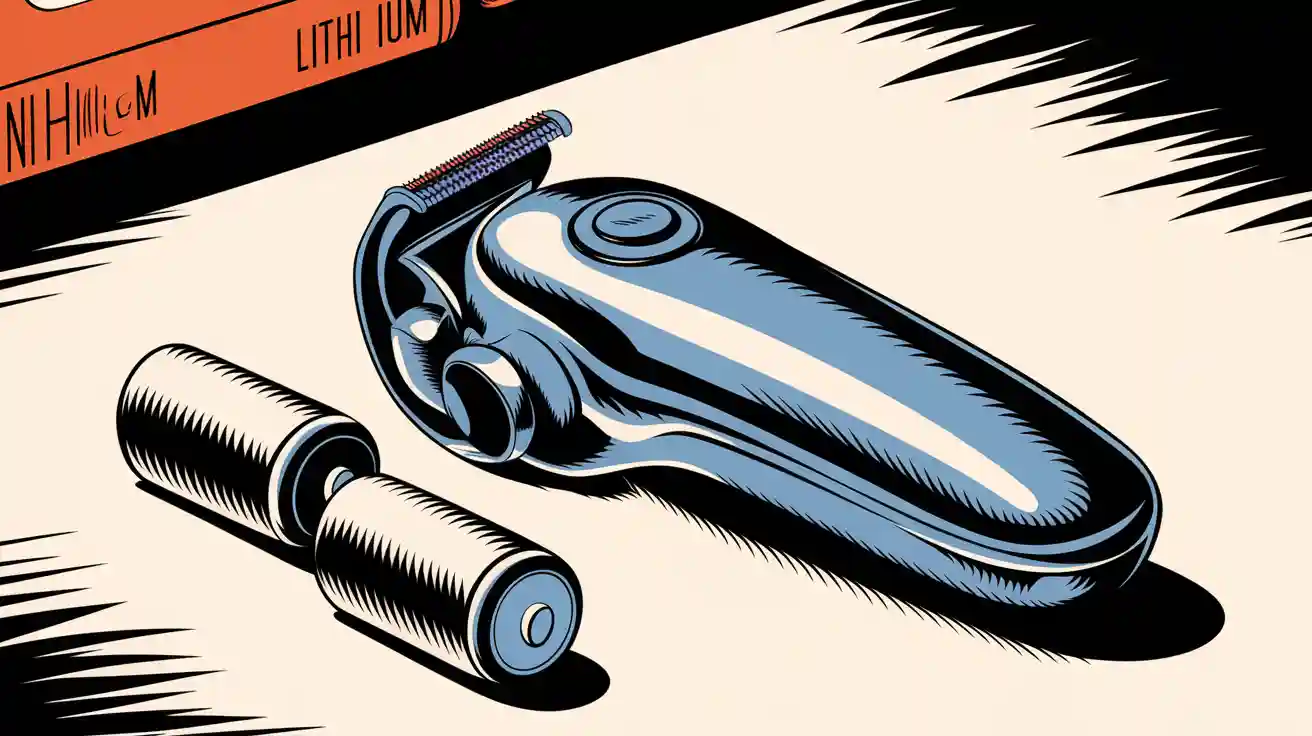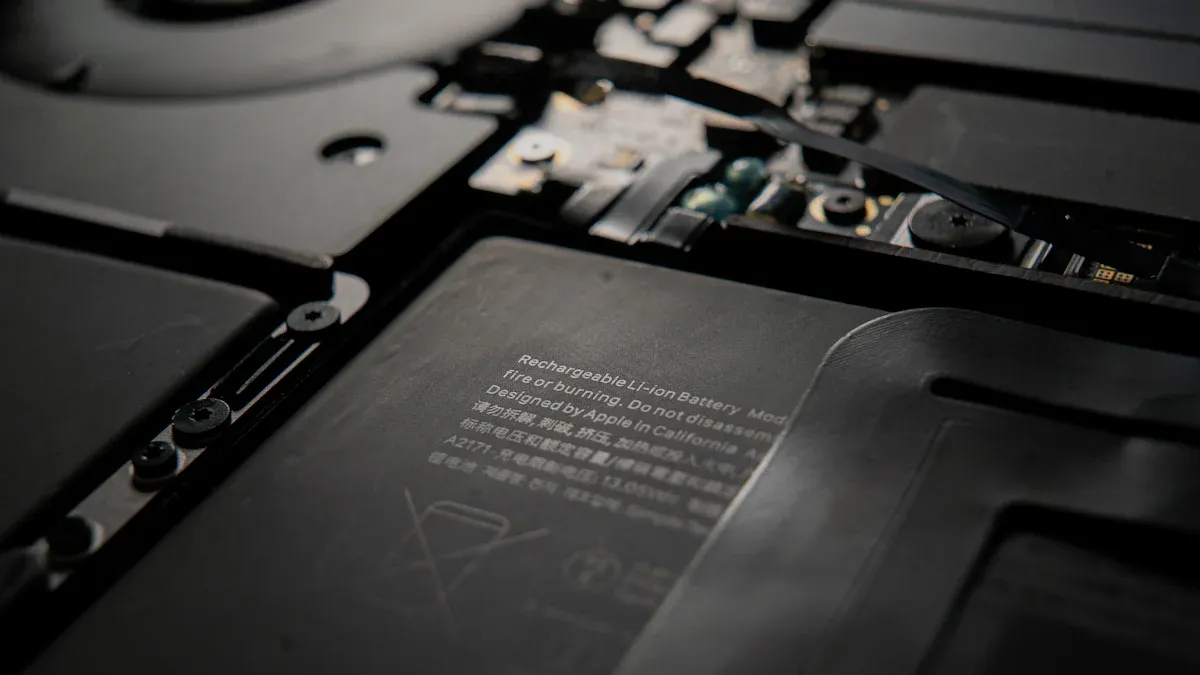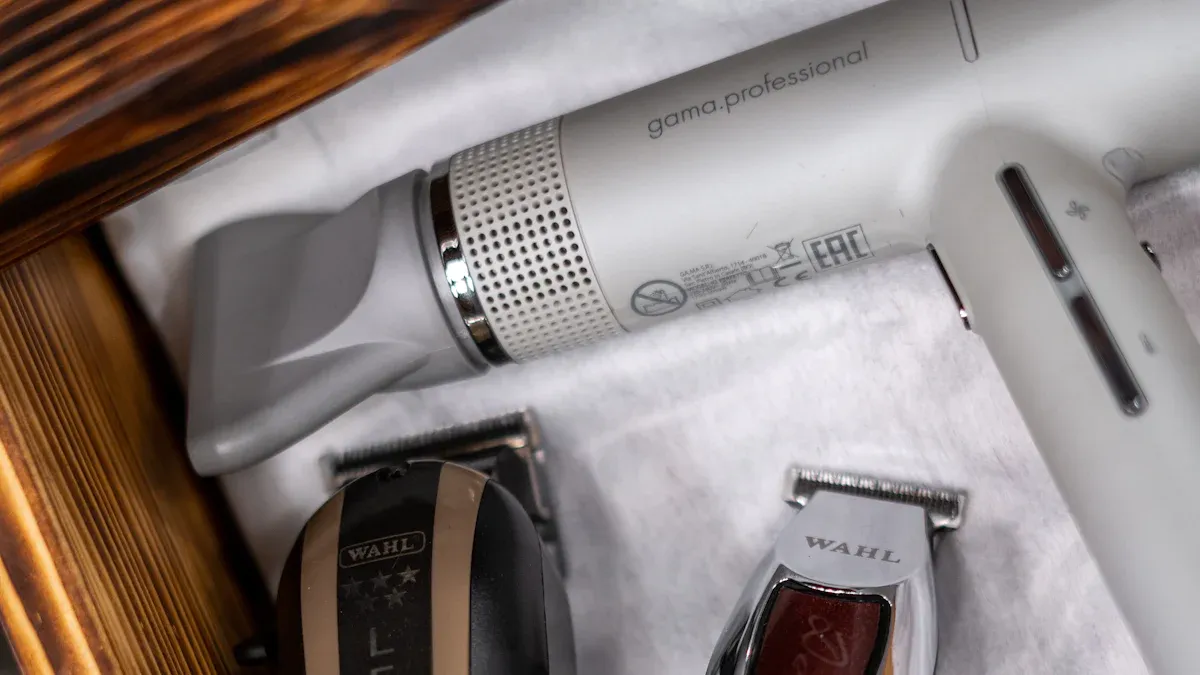
When choosing the right battery for your hair clippers, understanding the differences between lithium ion and NiMH batteries is essential. Each type offers unique benefits.
NiMH Batteries:
Lifespan: 500–800 cycles
Eco-friendly and cost-effective
Limited power capacity
Lithium Ion Batteries:
Lifespan: 500–2,000 cycles
High energy density for longer runtime
Premium pricing
This comparison highlights key factors like performance, durability, and cost efficiency to help you decide which is better—li-ion vs ni-mh battery—for your hair clipper battery needs.
Key Takeaways
NiMH batteries are cheap and better for the environment. They work well for people who want to save money.
Lithium-ion batteries last longer and store more energy. They are great for pro hair clippers needing steady power.
Think about charging time, battery life, and how fast they lose power when picking between NiMH and lithium-ion batteries.
Part 1: Key Differences Between NiMH and Lithium Batteries

1.1 Chemistry and Energy Density
The chemistry of a battery determines its energy density, which directly impacts its runtime and performance. NiMH batteries rely on nickel-metal hydride chemistry, offering an energy density of 60–120 Wh/kg. Lithium-ion batteries, on the other hand, utilize lithium-based chemistry, delivering a higher energy density of 100–270 Wh/kg. This significant difference means lithium-ion batteries can store more energy in a smaller, lighter package, making them ideal for applications requiring extended runtime and portability.
Tip: If you prioritize higher energy density for professional-grade hair clippers, lithium-ion batteries are the better choice.
1.2 Voltage and Power Output
Voltage plays a crucial role in determining the power output of a battery. NiMH batteries typically operate at a voltage of 1.2V, which is sufficient for basic hair clipper models. Lithium-ion batteries, however, deliver a higher voltage range of 3.6–3.7V. This higher voltage translates to more consistent power output, ensuring smoother and more efficient performance during use.
NiMH batteries: 1.2V working voltage
Lithium-ion batteries: 3.6–3.7V working voltage
The higher voltage of lithium-ion batteries makes them suitable for clippers that demand robust power for cutting thick or coarse hair.
1.3 Self-Discharge Rate and Shelf Life
Self-discharge rate affects how long a battery retains its charge when not in use. NiMH batteries exhibit a higher self-discharge rate, losing up to 20% of their charge within the first 24 hours and 10% per month thereafter. Lithium-ion batteries, in contrast, have a much lower self-discharge rate, retaining their charge for months with minimal loss.
Note: Lithium-ion batteries outperform NiMH batteries in shelf life, making them more reliable for occasional use or long-term storage.
1.4 Cycle Life and Durability
Cycle life refers to the number of charge-discharge cycles a battery can endure before its capacity significantly diminishes. NiMH batteries offer a cycle life of 500–1,000 cycles, while lithium-ion batteries typically last 300–500 cycles. However, lithium-ion batteries maintain their performance better under moderate current loads, whereas NiMH batteries are more stable under extreme temperature conditions.
Aspect | NiMH Batteries | Lithium Batteries |
|---|---|---|
Cycle Life | 500–1,000 cycles | 500–2,000 cycles |
Temperature Sensitivity | More stable | Sensitive to heat |
Alert: Overcharging or over-discharging can drastically reduce the cycle life of both battery types. Proper charging practices are essential to maximize durability.
Part 2: Performance Metrics Comparison
2.1 Charging Time and Runtime
Charging time and runtime are critical factors when evaluating the performance of hair clipper batteries. Lithium-ion batteries excel in this area due to their advanced chemistry, offering faster charging times and longer runtimes compared to NiMH batteries. For instance, the Wahl Chromado Lithium Clippers require only 60 minutes to charge fully, providing a runtime of 90 minutes. In contrast, NiMH batteries often take longer to charge and deliver shorter runtimes, making them less efficient for frequent use.
Product Name | Battery Type | Charging Time | Runtime |
|---|---|---|---|
Wahl Chromado Lithium Clippers | Lithium | 60 minutes | 90 minutes |
Cordless Color Pro | NiMH | N/A | 2 hours |
Some lithium-ion models also feature quick-charge capabilities, allowing you to use the clippers after just a few minutes of charging. For example, the Cordless Color Pro offers a 5-minute quick charge for 15 minutes of use. This feature is particularly beneficial for professionals who need reliable performance during busy schedules.
Tip: If you prioritize shorter charging times and extended runtime, lithium-ion batteries are the superior choice for hair clippers.
2.2 Efficiency and Power Consistency
Efficiency and power consistency directly impact the cutting performance of hair clippers. Lithium-ion batteries maintain a steady voltage throughout their discharge cycle, ensuring consistent power output. This stability allows clippers to perform smoothly, even when cutting thick or coarse hair. NiMH batteries, on the other hand, experience a gradual voltage drop as they discharge, leading to reduced cutting efficiency over time.
Model | Runtime | Charge Time | Quick Charge Use |
|---|---|---|---|
Vapor | 2.5 hours | 60 minutes | N/A |
Senior | 80 minutes | 60 minutes | N/A |
Black Magic Clip | 100 minutes | 60 minutes | N/A |
The higher energy density of lithium-ion batteries also contributes to their efficiency. They can store more energy in a compact form, reducing the need for frequent recharging. This advantage makes them ideal for professional-grade clippers that demand consistent performance throughout the day.
Note: For uninterrupted and efficient operation, lithium-ion batteries outperform NiMH batteries in terms of power consistency.
2.3 Weight and Compactness
Weight and compactness are essential considerations, especially for handheld devices like hair clippers. Lithium-ion batteries are significantly lighter and more compact than their NiMH counterparts, thanks to their higher energy density. This design advantage not only enhances portability but also reduces hand fatigue during prolonged use.
Nickel-metal hydride batteries, while more affordable, tend to be bulkier and heavier. This added weight can make clippers less comfortable to handle, particularly for professional barbers who use them for extended periods. The compact nature of lithium-ion batteries also allows manufacturers to design sleeker and more ergonomic clippers, further improving user experience.
Alert: If portability and ease of use are priorities, lithium-ion batteries offer a clear advantage over NiMH batteries.
Part 3: Best Applications for Hair Clippers

3.1 NiMH Batteries for Budget-Friendly Clippers
NiMH batteries are ideal for budget-friendly hair clippers due to their affordability and eco-friendly design. These rechargeable batteries offer a decent lifespan of up to three years, making them suitable for casual users who prioritize cost over performance. Their lower energy density and voltage make them less powerful compared to lithium-ion batteries, but they still provide adequate functionality for basic grooming tasks.
NiMH batteries also perform well in extreme temperature conditions, ensuring reliable operation in diverse environments. However, their higher self-discharge rate means you need to recharge them more frequently, especially if the clippers are stored for extended periods. If you’re looking for a cost-effective solution for occasional use, NiMH batteries deliver reasonable performance without breaking the bank.
3.2 Lithium Ion Batteries for Professional-Grade Clippers
Lithium-ion batteries shine in professional-grade hair clippers, offering unmatched performance and reliability. Their higher energy density ensures longer runtime, while their compact design reduces weight, enhancing portability and ease of use. For example, the Gamma+ Ergo Clipper provides a minimum of three hours of runtime on a full charge, making it suitable for multiple haircuts.
These batteries also feature quick charging capabilities and smart LED indicators, allowing you to monitor battery status and avoid interruptions during busy schedules. Lithium-ion technology minimizes memory effect, enabling flexible recharging without compromising battery health. If you demand consistent power output and efficiency for professional applications, lithium-ion batteries are the superior choice.
3.3 Factors to Consider When Choosing a Hair Clipper Battery
When selecting between NiMH and lithium-ion batteries, consider factors like energy density, lifespan, and cost. Lithium-ion batteries offer a higher energy density and longer lifespan, lasting up to ten years with proper care. NiMH batteries, while cheaper, have a shorter lifespan and higher self-discharge rate.
Factor | NiMH Batteries | Lithium Batteries |
|---|---|---|
Energy Density | Lower energy density | Higher energy density |
Voltage | Lower voltage | Higher voltage |
Lifespan | Up to 3 years | Up to 10 years (2,000 cycles) |
Self-Discharge Rate | Higher (up to 50% loss in a month) | Lower self-discharge rate |
Safety | Susceptible to overheating | More tolerant and safer |
Charging Time | Generally longer | Generally shorter |
Ultimately, the application of li-ion and NiMH batteries depends on your needs. For casual use, NiMH batteries provide a cost-effective solution. For professional-grade clippers, lithium-ion batteries deliver superior performance and reliability.
Tip: Explore custom battery solutions for tailored performance. Visit Large Power for expert guidance.
When choosing between NiMH and lithium-ion batteries for hair clippers, consider their distinct advantages:
NiMH Batteries: Affordable and eco-friendly, ideal for casual use.
Lithium-ion Batteries: Lightweight, efficient, and long-lasting, perfect for professional-grade clippers.
Recent studies emphasize lithium-ion technology’s superior runtime and efficiency, making it indispensable for high-performance applications. Explore custom battery solutions for tailored options.
FAQ
1. What is the lifespan of lithium-ion batteries in hair clippers?
Lithium-ion batteries typically last 300–500 cycles. Proper care can extend their lifespan to up to 10 years. Learn more about Lithium-ion Batteries.
2. Are NiMH batteries suitable for professional-grade hair clippers?
NiMH batteries lack the energy density and voltage required for professional-grade clippers. Lithium-ion batteries are better suited for consistent power output. Explore Custom Battery Solutions.
3. How can I choose the right battery for my hair clippers?
Consider runtime, charging time, and cost. Lithium-ion batteries excel in performance, while NiMH batteries are budget-friendly. Visit Large Power for tailored solutions.




